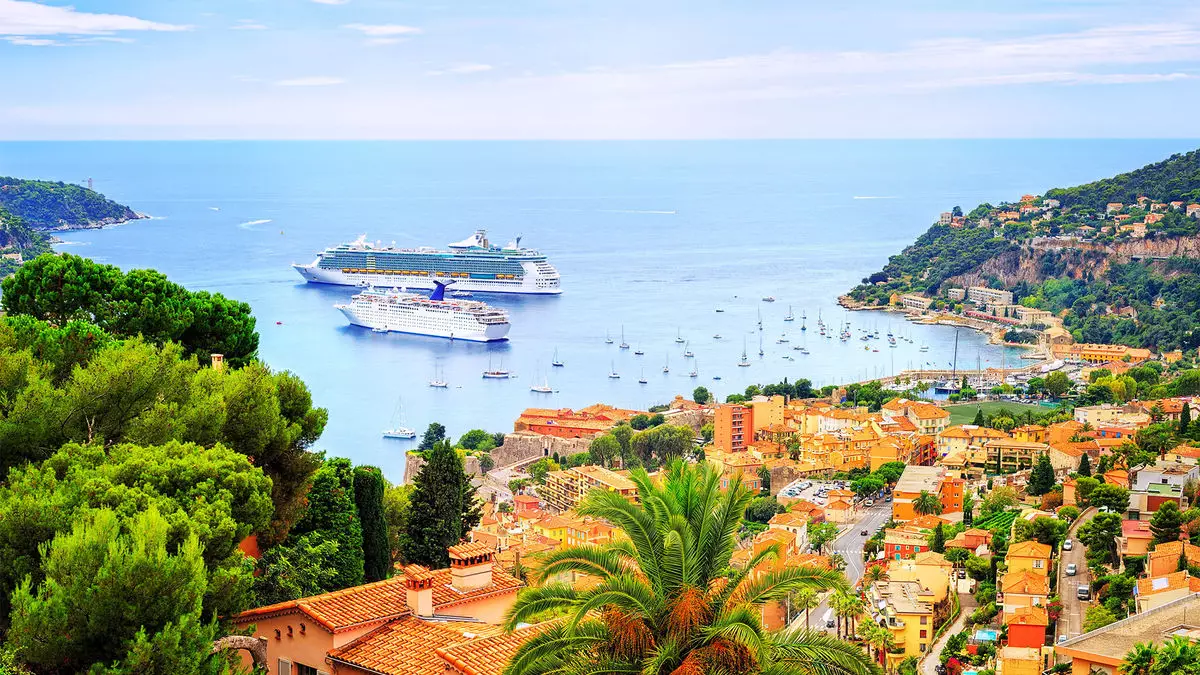The cruise industry, a significant player in global tourism, is facing mounting challenges as European destinations increasingly push back against the influx of large cruise ships. In the picturesque region of Nice-Côte d’Azur, the city’s mayor, Christian Estrosi, has taken a firm stand against ships with a capacity of at least 900 passengers. This decision is part of a broader international movement aimed at combating overtourism and addressing environmental concerns. As cities like Nice and Villefranche-sur-Mer seek to reclaim their charm from the pressures of mass tourism, the stakes for the cruise industry are higher than ever.
Estrosi’s decree, set to take effect on July 1, will prevent larger vessels from being allowed to disembark passengers at these iconic ports. This move has raised alarms within the Cruise Lines International Association (CLIA), which advocates for the industry’s interests, urging reconsideration of such sweeping bans in favor of more holistic approaches to tourism management. While the intent behind these regulations aligns with sustainable tourism goals, the economic ramifications could be severe.
The potential fallout from this ban is substantial. Industry estimates suggest that local economies might face a loss of over $10 million, while regional effects could exceed $600 million. These figures highlight the critical economic dependency that many coastal cities have on cruise tourism. According to CLIA and various maritime organizations, the decree could jeopardize the investments made by French and European shipowners in sustainable ships, negatively affecting their operations and the broader tourism ecosystem.
As cruise lines adapt to these regulatory challenges, the maritime economic framework appears precarious. The popular sentiment against large vessels stems not only from concerns about overcrowding but also from fears that mass tourism erodes the cultural and environmental fabric of these destinations. Thus, the conflict presents a complex dilemma: how to balance the economic benefits of cruise tourism with the preservation of unique local identities.
In light of these restrictions, cruise lines are forced to reassess their strategies. Companies such as Oceania Cruises have already indicated their concerns, as many of their ships exceed the new passenger capacity limits. Frank A. Del Rio, Oceania’s president, acknowledges the rich tapestry of alternative port options within the Mediterranean, urging a shift in focus towards smaller vessels that can access more restrictive harbors.
The industry also risks diminished consumer confidence. Travel advisors like Jackie Friedman highlight the uncertainty introduced by such regulations. Clients may find their itineraries altered with little warning, undermining their travel experiences. Additionally, the current restrictions might promote a shift in consumer preferences, as cruisers look towards smaller ships and less frequented ports as alternatives. Indeed, companies like Ponant are already seizing the opportunity, launching new itineraries specifically designed to navigate the growing restrictions around larger vessels.
The situation in Nice-Côte d’Azur is part of a larger pattern of lawmakers and local authorities grappling with the realities of overtourism. Cities like Venice and Barcelona have faced similar challenges, introducing regulations aimed at curbing the effects of mass tourism. While citizens and activists advocate for more sustainable practices, the responses from the cruise industry demonstrate a tension between economic interests and community welfare.
Geoff Cox, a leader at KHM Travel Group, supports the restrictions, albeit cautiously, noting that while they may minimize overcrowding, it’s uncertain how deeply they will impact the cruise sector as a whole. The reality is that as long as there is a demand for cruise travel, lines will always find ways to circumvent restrictions and continue to bring passengers to these historically rich and idyllic locations.
The cruise industry stands at a crossroads. The combination of tightening regulations and changing consumer preferences could ultimately result in a transformative shift in how cruise tourism is conducted in the Mediterranean and beyond. The potential shift towards smaller ships may redefine cruise experiences, catering to a more niche market focused on exclusivity and personalized service.
As the landscape evolves, adaptive strategies will be critical. Cruise lines need to engage more deeply with local economies, promoting sustainable practices that benefit both their businesses and the destinations they visit. Collaboration with local stakeholders will be essential to enhance the communal ethos while securing the viability of the cruise sector.
While the decree from Nice-Côte d’Azur may serve as a stark warning to the cruise industry, it also lays the groundwork for potential innovation and a renewed emphasis on sustainable tourism practices. The future may very well depend on the industry’s capacity to adapt to these challenges, balancing economic viability with the imperative for environmental stewardship.

